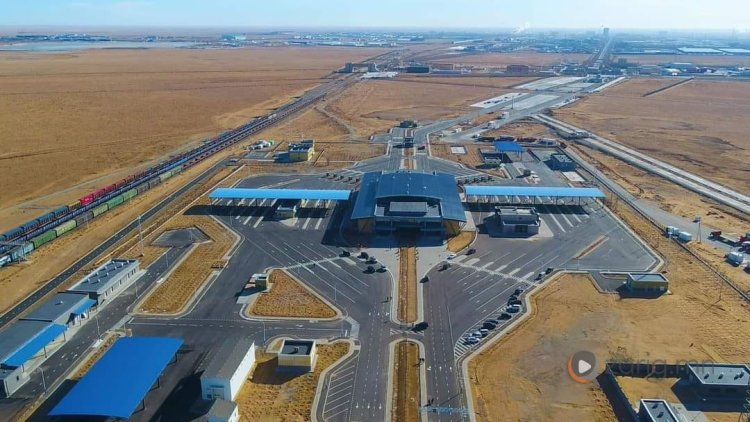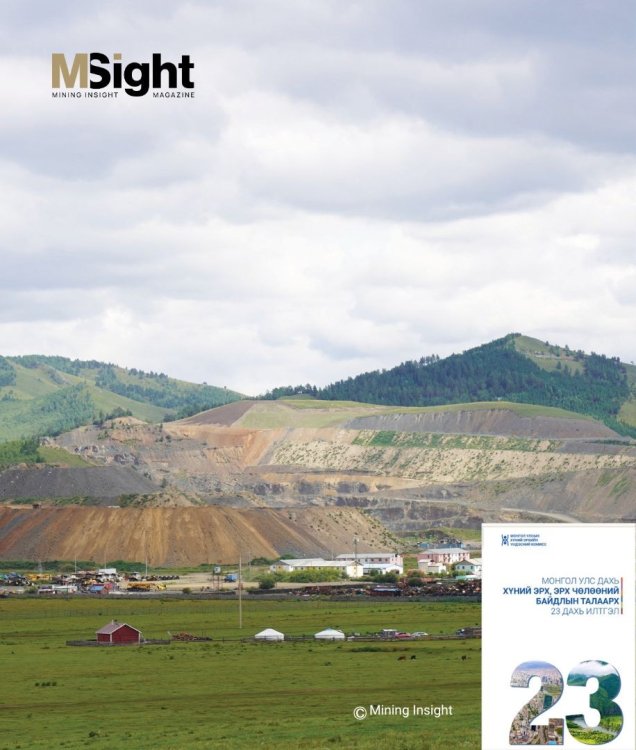Mongolia achieved a historic milestone as coal exports neared 70 million tonnes for the first time, marking a significant achievement in the realization of the “Port Recovery” policy. The transportation of coal to international markets utilized primary export routes, including Gashuunsukhait and Shiveekhuren ports via road, AGV (automated guided vehicles), and through Zamyn-Uud port, Bayankhoshuu, Bichigt, Bulgan, Burgastai, Khangi, and Khavirga ports via both road and rail. Regarding overall distribution, 92 percent of the coal exports were facilitated through road ports, with the remaining 8 percent through railway ports. This reflects a remarkable 90 percent increase compared to the prepandemic year of 2019, signifying a historic success for Mongolia’s foreign trade and exports. As part of the strategy to eliminate delays in port development and enhance cargo traffic, significant infrastructure projects were undertaken last year. The construction of roads, railways, container transport terminals, and staff housing, along with the organization of border control personnel, was carried out at Shiveekhuren, Gashuunsukhait, Khangi, Bichigt, Zamyn-Uud, Altanbulag, Sukhbaatar, and Borshoo ports. Notably, housing construction initiatives were implemented, marking the development of 8 out of the 13 ports with regular operations along the China border. Under Resolution No. 349 issued by the Government of Mongolia, coal export via AGV commenced with the activation of the automated container transport terminal (November 2023) at the 66-hectare Gashuunsukhait port in Umnugovi province.
The ongoing port expansion reform at Gashuunsukhait is 61 percent complete. Additionally, the automatic container transportation terminal at Shiveekhuren Port became operational last year, anticipating a fourfold increase in throughput capacity and the potential to export 40 million tonnes of coal annually. Discussions with the Chinese side have taken place to expand the port’s capacity, including considerations for a new entry for coal exports, upgrading the power transmission line from 35 KW to 110 KW from China, and extending port operating hours.
Zamyn-Uud, Mongolia’s largest foreign trade port, witnessed a significant development as a half-month trial of 24-hour continuous access was conducted.
Following talks during the state visit of the Prime Minister of Mongolia to China in June 2023, a joint agreement was reached to shift the Zamyn-Uud Ereen port from 12-hour to 24-hour operations. A preparatory test conducted in December involved a 14- day trial period during which 1398 heavy-duty vehicles entered the state border between 06:00 pm and 08:00 am. The relevant organizations plan to continue this experiment this year. Furthermore, modernization efforts to increase the capacity of Zamyn-Uud Port and the passenger transport complex have been completed, with the cargo transport section slated to commence operations in the first quarter of this year. Subsequently, among the 10 ports that are in constant operation along the Russian border, decisions have been made to initiate the modernization of Tsagaannuur, Khavirga, and Bulgan ports starting this year. In 2024, the development of structures and engineering infrastructure at these ports will commence,
facilitated by soft loans from the Asian Development Bank, with an anticipated 2-3 times increase in current capacity. Notably, a new gateway for the export and import of mining products is planned to be inaugurated at Bulgan Port. The construction of Borshoo port reached completion and was operationalized in 2023. Ereentsav port, seen as a potential link between Russia and China in the northeastern region of Mongolia, is on the verge of an international designation. Discussions were held during a meeting led by Mongolia’s Minister and Chairman of the National Committee for Port Recovery, Tulga. B, on October 24, 2023, explored altering the status of the Ereentsav-Solovyevsk railway port. Subsequently, a mutual agreement with the Russian side to amend the “Agreement between the Governments of Mongolia and the Russian Federation on border crossings and simplified access to the borders of Mongolia and the Russian Federation” was reached. Both parties recognized the significance of this agreement in fostering the development of the Eastern Economic Corridor connecting Russia, Mongolia, and China through the Ereentsav-Bichigt port. Presently, efforts are directed towards legal reforms to establish unified management of border ports and the infrastructure development of settlements near the ports. A pivotal aspect involves revising the Law on Ports after an 8-year interval, with the expectation that this revision will enhance the economic impact of the port and streamline port operations. The National Committee for Port Recovery is actively engaged in aligning its policies and directions with the implementation of the border port development master plan, partial master plan, and infrastructure plan. Coordination with the port development policies and planning of neighboring countries is prioritized, and efforts are underway to develop the economic content of the region surrounding the border port.
Mining Insight Magazine, February 2024 №2 (027)




















